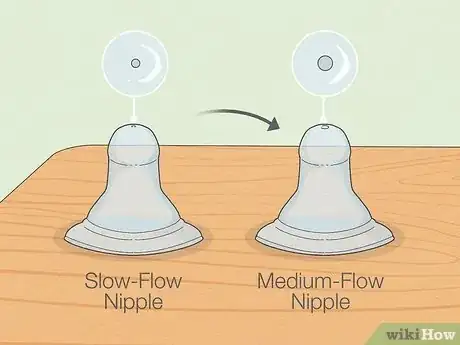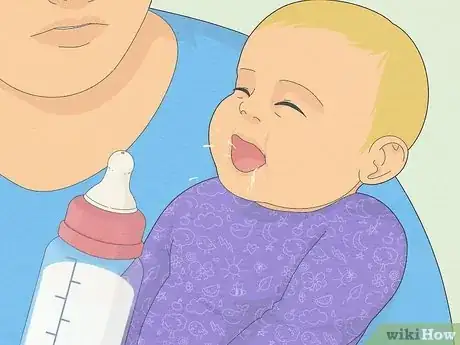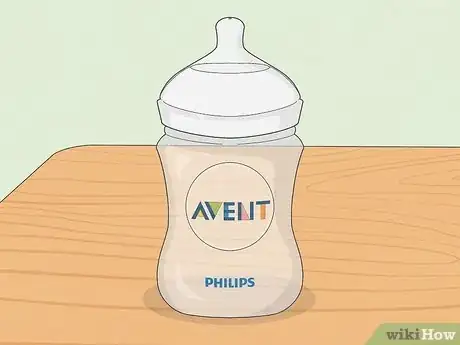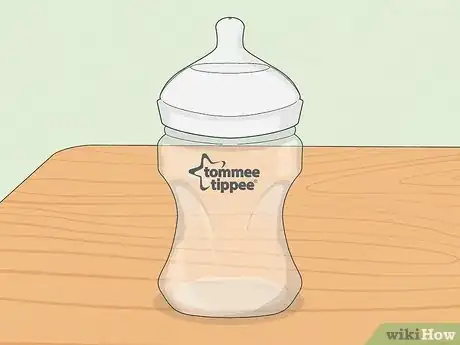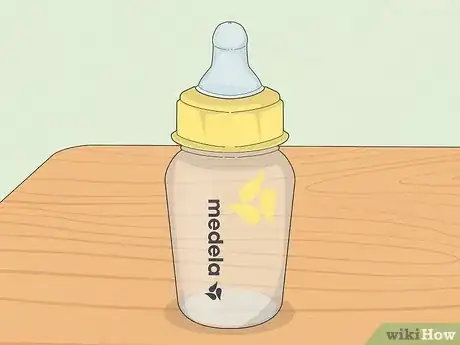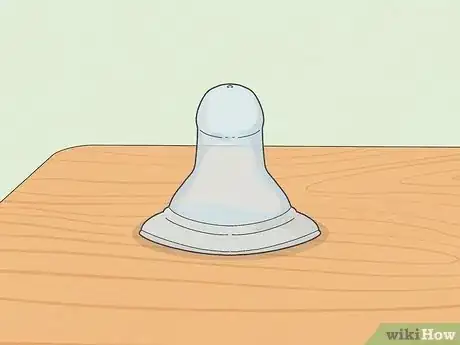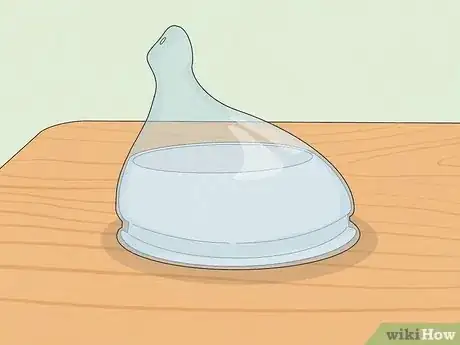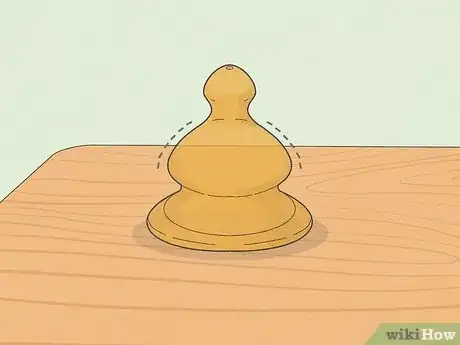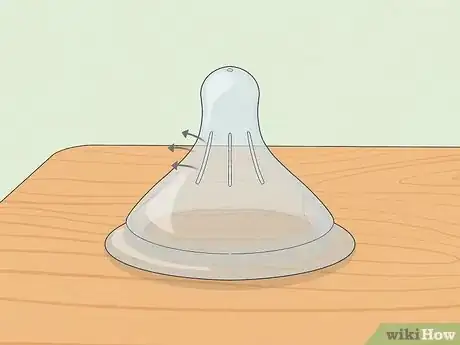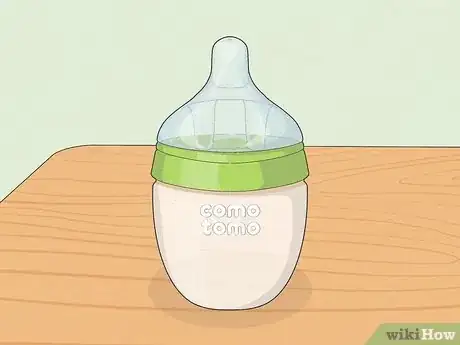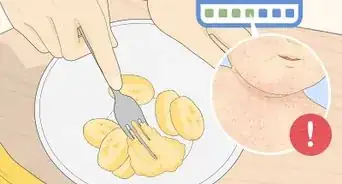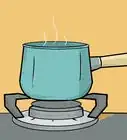This article was co-authored by Joel Warsh, MD and by wikiHow staff writer, Janice Tieperman. Dr. Joel Warsh is a board certified Pediatrician and the Owner & Founder of Integrative Pediatrics and Medicine in Los Angeles, California. With over a decade of experience, Dr. Warsh specializes in holistic and integrative medicine. He holds a Bachelor’s degree in Kinesiology and Health Sciences, a Master’s degree in Epidemiology and Community Health, and a Doctor of Medicine (MD) from Thomas Jefferson Medical College, where he was elected president of the Jefferson Pediatric Society. Dr. Warsh then completed his Pediatric Residency at Children’s Hospital of Los Angeles (CHLA), where he received the George Donnell Society Research Fellow.
There are 14 references cited in this article, which can be found at the bottom of the page.
This article has been viewed 4,842 times.
Choosing the right bottle nipple size is all about giving your baby a good flow of milk or formula. How are you supposed to know when it’s time to size up or down, though? That really depends on your little one’s needs and feeding habits—and we’re here to help you know what to be on the lookout for. Read on to learn when a bottle nipple size change is necessary, and what products could be a good fit for you and your baby.
Things You Should Know
- Switch to a slower-rate nipple if your baby takes more than a half hour to finish a bottle. If your baby sucks up milk really quickly, choose a faster-rate nipple.
- Slow-flow nipples are good for babies between 0 and 3 months old, while medium-flow nipples are good for babies who are 3-6 months old.
- Fast-flow nipples are best for babies that are 6-12 months old.
- Opt for a wide-neck, slow-flow bottle nipple if you’re switching between breastfeeding and bottle-feeding to help prevent nipple confusion.
Steps
Warnings
- Replace your bottle nipples as soon as they start looking worn out to protect your baby from any choking hazards. To test the nipple, tug firmly along the bulb and see if it forms back into its old shape. If the nipple can’t hold its shape, toss it out.[21]⧼thumbs_response⧽
References
- ↑ https://www.sdbfc.com/blog/2019/9/10/bottle-feeding-the-breastfed-baby-faqs#
- ↑ https://www.nationwidechildrens.org/family-resources-education/health-wellness-and-safety-resources/helping-hands/choosing-a-bottle-flow-rate
- ↑ https://www.nationwidechildrens.org/family-resources-education/health-wellness-and-safety-resources/helping-hands/choosing-a-bottle-flow-rate
- ↑ https://www.unitypoint.org/waterloo/choosing-bottle-nipples.aspx
- ↑ https://www.massgeneral.org/children/feeding/choosing-a-bottle-for-your-baby
- ↑ https://uamshealth.com/nicu/wp-content/uploads/sites/11/2020/01/NICU-Nipple-Chart.pdf
- ↑ https://images-na.ssl-images-amazon.com/images/I/61L5XjwEEHS.pdf
- ↑ https://www.documents.philips.com/assets/20211216/99ce8db8d6f04f87aefbae00009e4c00.pdf
- ↑ https://uamshealth.com/nicu/wp-content/uploads/sites/11/2020/01/NICU-Nipple-Chart.pdf
- ↑ https://www.documents.philips.com/assets/20210410/3dc3904289804a6b9cccad06005e99ed.pdf
- ↑ https://images-na.ssl-images-amazon.com/images/I/61L5XjwEEHS.pdf
- ↑ https://myhealth.alberta.ca/Health/Pages/conditions.aspx?hwid=tj8045
- ↑ https://www.youtube.com/watch?v=QSn1R594hQs&t=0m36s
- ↑ https://www.unitypoint.org/waterloo/choosing-bottle-nipples.aspx
- ↑ https://www.massgeneral.org/children/feeding/choosing-a-bottle-for-your-baby
- ↑ https://images-na.ssl-images-amazon.com/images/I/714IywzIT7S.pdf
- ↑ https://uamshealth.com/nicu/wp-content/uploads/sites/11/2020/01/NICU-Nipple-Chart.pdf
- ↑ https://www.nct.org.uk/baby-toddler/feeding/practical-tips/10-bottle-feeding-tips-for-breastfed-babies
- ↑ https://www.bidmc.org/-/media/files/beth-israel-org/centers-and-departments/neonatology/nipplebottlefeedingsystems.pdf
- ↑ https://www.cdc.gov/hygiene/childcare/clean-sanitize.html
- ↑ https://www.nationwidechildrens.org/family-resources-education/health-wellness-and-safety-resources/helping-hands/choosing-a-bottle-flow-rate
